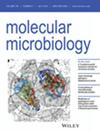An Uncharacterized Domain Within the N-Terminal Tail of Histone H3 Regulates the Transcription of FLO1 via Cyc8
IF 2.6
2区 生物学
Q3 BIOCHEMISTRY & MOLECULAR BIOLOGY
引用次数: 0
Abstract
Yeast flocculation relies on cell surface flocculin proteins encoded by the sub-telomeric gene, FLO1. The expression of FLO1 is antagonistically regulated by the Tup1-Cyc8 repressor complex and the Swi-Snf co-activator complexes. The role of hyperacetylated N-terminal amino acid residues of histone H3 and H4 is well established in the transcription of FLO1 and other Tup1-Cyc8 regulated genes. However, sub-domains within the tails of histone H3 and H4 are yet to be identified and the mechanism by which they regulate the FLO1 transcription is completely unexplored. Upon screening of different H3 and H4 N-terminal stretch deletion mutants, we have identified a new region within the N-terminal tail of histone H3, H3Δ(17–24) regulating the transcription of FLO1 and FLO5. This N-terminal truncation mutant showed higher FLO1 and FLO5 expression by 68% and 41% respectively compared to wild-type H3. Further examination showed reduced Cyc8 and nucleosome occupancy in the upstream regulatory region of active flo1 in the H3Δ(17–24) mutant than in H3 wild-type cells. The findings also indicate that Hda1 assists in Cyc8 interaction at the active FLO1 template. Altogether we demonstrate that Tup1-independent interaction of Cyc8 with the active FLO1 gene acts as a transcription limiting factor and that the histone H3 N-terminal 17–24 stretch is essential for this interaction. In the absence of the 17–24 stretch, the Cyc8 restrictive effect is altered, resulting in over-expression of FLO1.

组蛋白H3 n端尾部的未知结构域通过Cyc8调控FLO1的转录
酵母的絮凝作用依赖于由亚端粒基因FLO1编码的细胞表面絮凝蛋白。FLO1的表达受Tup1-Cyc8抑制复合物和Swi-Snf共激活复合物的拮抗调节。组蛋白H3和H4的n端高乙酰化氨基酸残基在FLO1和其他Tup1-Cyc8调控基因的转录中的作用已经得到了很好的证实。然而,组蛋白H3和H4尾部的亚结构域尚未被鉴定,它们调节FLO1转录的机制也完全未被探索。通过筛选不同的H3和H4 n端拉伸缺失突变体,我们在组蛋白H3 n端尾部发现了一个新的区域H3Δ(17-24),调控FLO1和FLO5的转录。该n端截断突变体的FLO1和FLO5表达量分别比野生型H3高68%和41%。进一步的研究表明,与H3野生型细胞相比,H3Δ(17-24)突变体中活性flo1上游调控区域的Cyc8和核小体占用率降低。研究结果还表明,Hda1协助Cyc8在活性FLO1模板上的相互作用。总之,我们证明了Cyc8与活性FLO1基因的不依赖于tup1的相互作用作为转录限制因子,并且组蛋白H3 n端17-24的拉伸对于这种相互作用是必不可少的。在缺少17-24的拉伸时,Cyc8的限制作用发生改变,导致FLO1过表达。
本文章由计算机程序翻译,如有差异,请以英文原文为准。
求助全文
约1分钟内获得全文
求助全文
来源期刊

Molecular Microbiology
生物-生化与分子生物学
CiteScore
7.20
自引率
5.60%
发文量
132
审稿时长
1.7 months
期刊介绍:
Molecular Microbiology, the leading primary journal in the microbial sciences, publishes molecular studies of Bacteria, Archaea, eukaryotic microorganisms, and their viruses.
Research papers should lead to a deeper understanding of the molecular principles underlying basic physiological processes or mechanisms. Appropriate topics include gene expression and regulation, pathogenicity and virulence, physiology and metabolism, synthesis of macromolecules (proteins, nucleic acids, lipids, polysaccharides, etc), cell biology and subcellular organization, membrane biogenesis and function, traffic and transport, cell-cell communication and signalling pathways, evolution and gene transfer. Articles focused on host responses (cellular or immunological) to pathogens or on microbial ecology should be directed to our sister journals Cellular Microbiology and Environmental Microbiology, respectively.
 求助内容:
求助内容: 应助结果提醒方式:
应助结果提醒方式:


